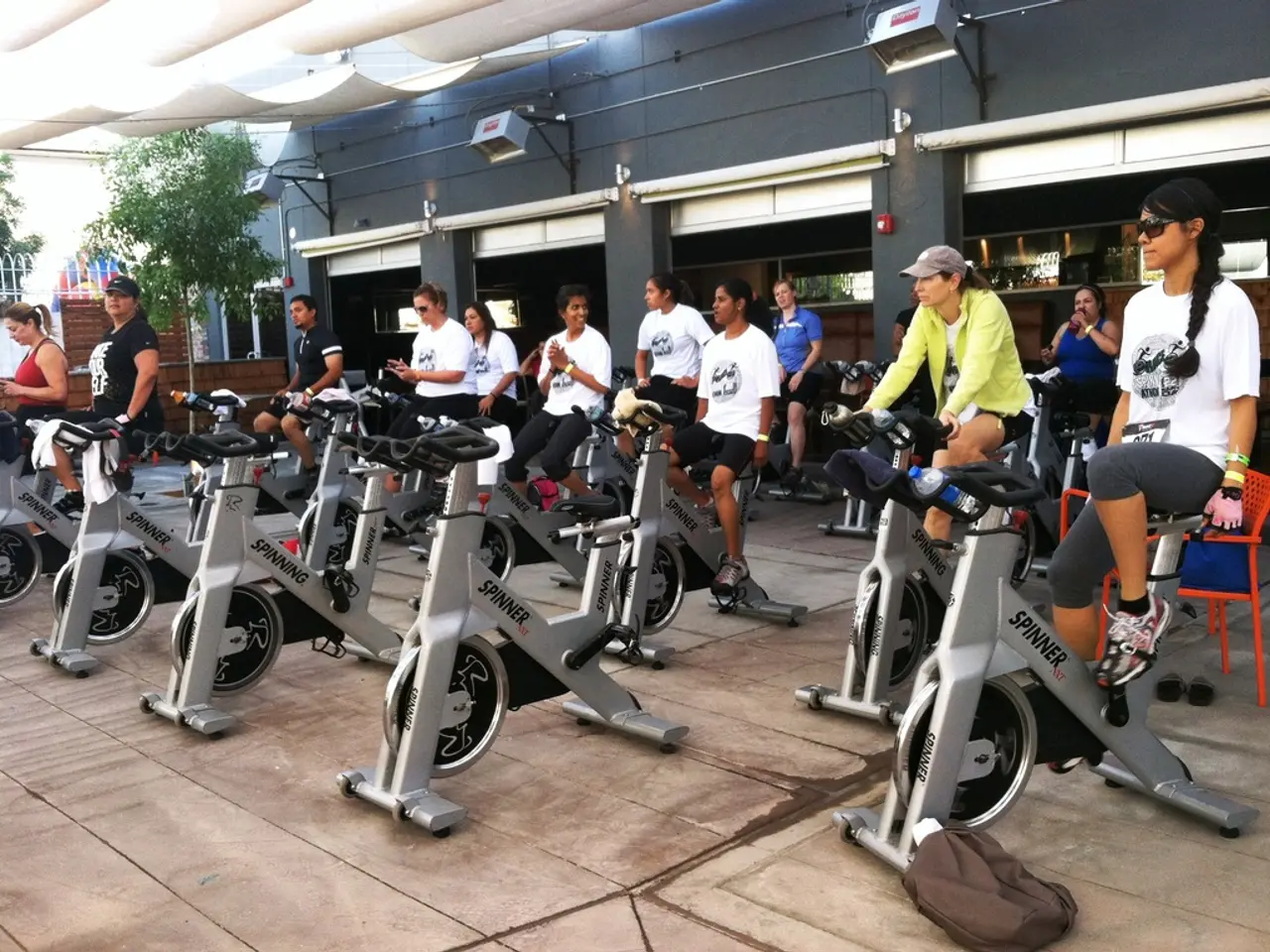Daily Weight Lifting Impact on Physical Conditioning
In the world of fitness, understanding the effects of different exercise modalities on our bodies is crucial, especially for older adults. A recent body of research sheds light on how exercise affects slow-twitch and fast-twitch muscle fibers, and how this knowledge can be applied to maintain muscle health and overall function.
Slow-twitch (type I) fibers, known for their endurance and fatigue resistance, and fast-twitch (type II) fibers, which generate high force and power, react differently to various exercise types.
Aerobic (endurance) exercise enhances slow-twitch fibers, increasing their aerobic capacity through the growth of mitochondrial enzymes and capillarization. It can even induce fast-to-slow fiber type conversions, improving endurance properties in fast-twitch fibers as well[1].
Intermittent aerobic exercise (e.g., interval training) combines aerobic benefits with higher intensity, activating both slow- and fast-twitch fibers, potentially improving metabolic flexibility and muscle oxidative capacity more than continuous aerobic exercise alone[1].
On the other hand, resistance training preferentially targets fast-twitch type II fibers, increasing muscle mass and strength. This is significant in older adults, as fast-twitch fibers decline preferentially with aging due to underuse[1][5].
The Journal of Research Quarterly for Exercise and Sport also found that Excess Post-Exercise Oxygen Consumption (EPOC) is higher after isocaloric bouts of Resistance Training compared to both Steady-State Aerobic and Intermittent Aerobic exercises[2]. EPOC, the increased oxygen consumption after exercise needed to restore the body to its pre-exercise state, varies by exercise type and influences recovery and muscle fiber metabolism distinctively.
Aerobic exercise produces a moderate EPOC, mainly affecting slow-twitch fibers that are engaged extensively during such activities. Intermittent aerobic exercise induces a larger EPOC compared to steady-state aerobic exercise due to higher intensity bursts, potentially stimulating both fiber types for enhanced metabolic recovery and adaptation[1].
Remarkably, Resistance training yields a substantial EPOC, often higher than aerobic exercise, due to muscle repair and hypertrophy processes predominantly occurring in fast-twitch fibers. This post-exercise metabolic boost supports anabolic processes critical for maintaining or increasing fast-twitch fiber mass in older adults[1][5].
In older adults, these dynamics have special significance. Aging is characterized by preferential loss of fast-twitch fibers due to inactivity or insufficient high-force activities[5]. Resistance training or high-intensity intermittent exercise that stimulates fast-twitch fibers can counteract this decline, supported by the enhanced EPOC that promotes recovery and muscle growth.
Aerobic exercise mainly benefits slow-twitch fibers and cardiovascular health but may not prevent the fast-twitch fiber loss seen with aging unless combined with higher intensity or resistance modalities[1][5]. Therefore, combining exercise modalities that engage both slow- and fast-twitch fibers—such as resistance training and intermittent aerobic exercise—maximizes muscle health and utilizes the EPOC response optimally in older adults[1][5].
The American Council on Exercise offers guidance on selecting the right intensity and repetitions for clients, as well as advice on appropriate rest intervals to aid in post-training recovery[3][4]. It is also crucial to avoid exceeding recommended exercise intensity or duration to prevent overtraining and potential injury[4].
Protein intake is essential for preserving muscle mass, as emphasized by Harvard Health Publishing[6]. The International Congress of Oral Implantologists further discusses Wolff's Law, stating that bone tissue adapts to the forces applied to it, leading to changes in its structure and density[7]. This adaptation in bone tissue can lead to increased bone strength and density in response to physical stress.
In conclusion, understanding the impact of different exercise modalities on slow-twitch and fast-twitch muscle fibers, and the role of EPOC in this process, can help older adults make informed decisions about their fitness routines to maintain muscle health and overall function.
- To maintain muscle health and overall function in older adults, it may be beneficial to incorporate a training program that combines both aerobic exercise and resistance training, as this could stimulate both slow-twitch and fast-twitch muscle fibers, optimizing the EPOC response and potentially counteracting the loss of fast-twitch fibers due to aging.
- Science illuminates the role of EPOC in muscle health, demonstrating that aerobic exercise produces a moderate EPOC, primarily affecting slow-twitch fibers, while resistance training yields a substantial EPOC due to muscle repair and hypertrophy processes, particularly in fast-twitch fibers, which are crucial in health-and-wellness and fitness-and-exercise routines for older adults.




